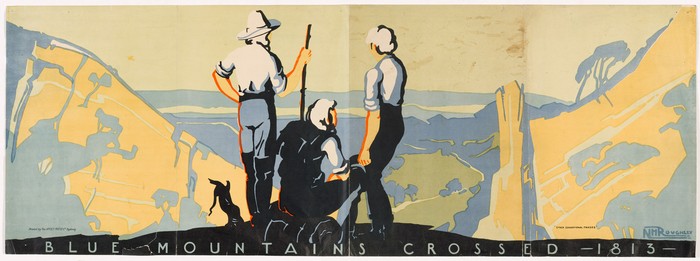
Blue Mountains crossed 1813
c. 1913
POSTERS/NEW SOUTH WALES/21
Poster
POSTERS/NEW SOUTH WALES/21
Poster
This poster was probably produced in 1913 to coincide with the 100th anniversary of the crossing of the Blue Mountains. The image depicts three bushwalkers looking out into an expansive landscape. The three figures possibly mirror the three men who made the 1813 crossing – Gregory Blaxland, William Wentworth and William Lawson. As well as the likelihood of this poster being a commemoration of the crossing, it also highlights the stunning scenery and bushwalking opportunities offered in the Blue Mountains.
Bushwalking has a long history in the Mountains. Europeans started to create walking tracks through the area around the 1820s, when wealthy land owners banded together to clear trees to open up view points and a network of tracks on their properties. However it wasn’t until the introduction of the railway 1868 that bushwalking became popular. By the 1880s, tourism to the area was booming, with young couples and families visiting the Mountains on day trips and weekend getaways. The most popular method to explore the landscape and take in the breathtaking views was embarking on a leisurely bushwalk.
Footnotes
The ways of the bushwalker : on foot in Australia by Melissa Harper. Sydney : UNSW Press, 2007


 Back to list
Back to list